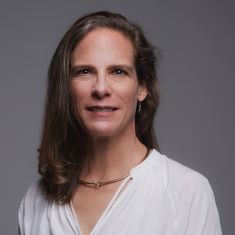
Susan M. Lea D.Phil., F.Med.Sci., F.R.S.
- Center for Cancer Research
- National Cancer Institute
- Building 538, Room 142
- Frederick, MD 21702
- 301-846-5016
- susan.lea@nih.gov
RESEARCH SUMMARY
Susan Lea is an internationally renowned structural biologist who has pioneered the use of mixed structural methods to study host-pathogen interactions and other medically important molecular pathways. Her laboratory uses and develops cutting-edge structural methods including cryo-electron microscopy and X-ray crystallography to define molecular mechanisms involved in health and disease states.
Areas of Expertise

Susan M. Lea D.Phil., F.Med.Sci., F.R.S.
Research
My research seeks to use structural information to understand molecular mechanisms involved in human health and disease states.
Projects focus on different biological systems ranging from bacterial pathogenesis systems to systems involved in human cell division. A common theme is how large, multiprotein, often membrane-crossing, complexes are assembled.
The studies of bacterial pathogenesis often examine large membrane-spanning complexes involved in bacterial protein/toxin secretion or bacterial movement. Research on human systems includes studies of serum-resident protein cascades involved in immune responses and coagulation, how centrosomes assemble during mitosis and how a variety of integral membrane proteins function in protein and membrane maturation, as transporters or cellular receptors. The systems we study are challenging, and we use multiple biophysical methods to address the questions we pose – this often leads us into methods development (both software and experimental) to allow us to obtain the answers we seek.
Publications
- Bibliography Link
- View Dr. Lea's ORCID bibliography.
- View Dr. Lea's Google Scholar page.
Structures of the stator complex that drives rotation of the bacterial flagellum
Symmetry mismatch in the MS-ring of the bacterial flagellar rotor explains the structural coordination of secretion and rotation
The substrate specificity switch FlhB assembles onto the export gate to regulate type three secretion
Type 9 secretion system structures reveal a new protein transport mechanism
Structural Basis for Mitotic Centrosome Assembly in Flies
Biography

Susan M. Lea D.Phil., F.Med.Sci., F.R.S.
Susan’s research career started with a Ph.D. in the Laboratory of Molecular Biophysics (1990-1993) at the University of Oxford with Prof. David Stuart F.R.S. using cutting-edge X-ray crystallography to study foot and mouth disease virus. In 1995 she established her independent group in the Department of Biochemistry, Oxford, with one of the first Royal Society Dorothy Hodgkin Fellowships. At that time the group focused on structural and functional studies of human enteroviruses and their receptors, which commonly complement system molecules. In 1999 she was appointed to a tenured academic position (university lecturer) in the Department of Biochemistry, Oxford, and continued to grow a program increasingly focused on human complement system regulation and pathogen evasion. This led to an interest in bacterial pathogenesis systems which expanded when she moved her group to the Sir William Dunn School of Pathology, Oxford, in 2000. She was appointed to the Chair in Microbiology in that Department in 2016. Susan was elected a member of the European Molecular Biology Organisation (EMBO) in 2015, a Fellow of the Academy of Medical Sciences in 2017, and Fellow of both The Royal Society of London and the American Academy of Microbiology in 2022.
Job Vacancies
We have no open positions in our group at this time, please check back later.
To see all available positions at CCR, take a look at our Careers page. You can also subscribe to receive CCR's latest job and training opportunities in your inbox.
Team
News
Learn more about CCR research advances, new discoveries and more
on our news section.






